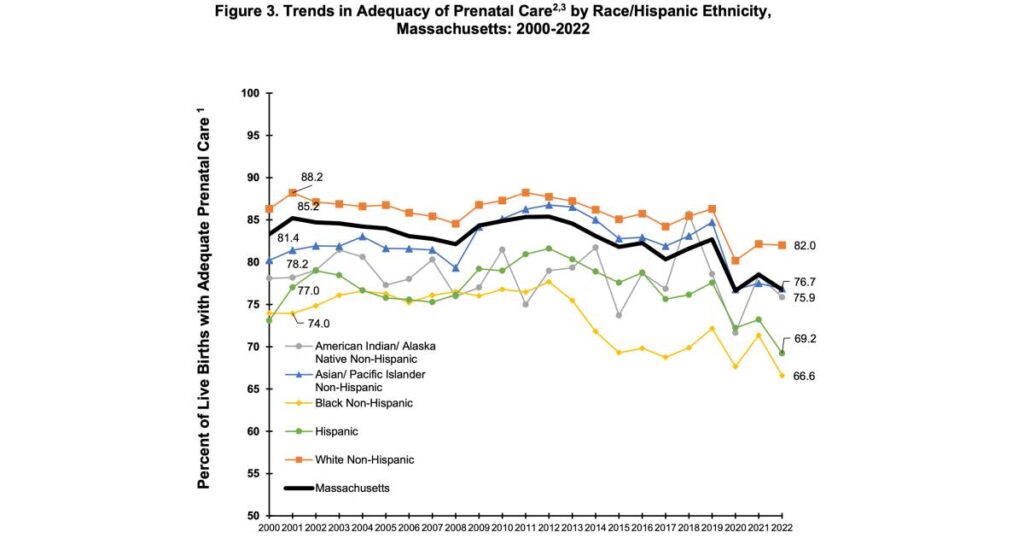
Fewer people born in 2022 received adequate prenatal care than the previous year, and more Baystaters used fertility treatment, according to a new study.
a report From the Department of Public Health.
The Department of Public Health’s look at 68,579 births for 2022 showed some encouraging trends, such as a decline in gestational diabetes and the teen birth rate, as well as troubling maternal health outcomes, such as the proportion of low-birth-weight babies reaching a record high when assessed over the decade. the past.
In response to years of declining health outcomes, especially among pregnant women of color, lawmakers on Beacon Hill passed this session with a sweeping vote
Maternal health care bill This is expected to improve access to care and address racial disparities.
The volume of births decreased by 0.8% between 2021 and 2022. “It is too early to measure or quantify the significance of the slight increase in the birth rate between 2020 and 2021, followed by a decline this year, so this trend must continue,” the Department of Public Health said. observer.”
The teen birth rate fell “slightly” in 2022 but racial disparities remain. Compared with the birth rate for white teens, the measure is ten times higher for Hispanic teens and about five times higher for black teens.
The birth rate among people with gestational diabetes has fallen for the first time in six years, but the Department of Public Health said the number is “nearly three times what it was in 2000”.
Nearly one in 13 babies are born with low birth weight, and the Department of Public Health said the measure remains “without improvement after two decades.” Data from 2022 show that 5,369 children had a “low birth weight” defined as less than 5.5 pounds, while 741 children had a “very low birth weight” of less than 3.3 pounds.
The Department of Public Health says premature births continue to rise, with one in every 11 preterm births, which officials define before the 37th week of pregnancy, occurring. According to the report, the rate “remains higher for black than non-Hispanic births, with more than one in nine babies born prematurely.”
Between 2021 and 2022, the proportion of births to individuals who received adequate prenatal care fell from 78.5% to 76.7%, although the measure varied across insurance types. Data show that 82.9% of people with private insurance received adequate prenatal care, compared to 69.8% for those with public insurance. The report also shows that 82% of white people who gave birth received adequate prenatal care in 2022, compared to 66.6% of black individuals.
The Department of Public Health said 4,454 people used fertility treatment in 2022, compared to 3,991 in 2021. Among those receiving treatment, more people turned to assisted reproductive technology such as artificial insemination, with the rate rising from 72.9% in 2021 to 76% in 2022. According to the report, Bay Staters who used assisted reproductive technology were white.







